|
|
Journals 2005/2006
Susan Holt
Arcadia High School, Phoenix, Arizona
"Investigating Indonesian Tsunami"
M/V Performer
May 9-26 |
 |
 |
Journal Index:
May 8 - 9 - 10 - 11 - 12 - 13 - 14 - 15

16 - 17 - 18 - 19 - 20 - 21 - 22 - 23 |
May 16, 2005
 |
| The high quality camera that was not working properly. The ROV technicians had to pull it off the ROV, figure out the problem, and fix it or the whole documentary would have been in jeopardy. The ability of these men to fix all problems is phenomenal! |
(Click on thumbnails below for full version pop-up)

 |  | 
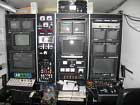 |
| The problem camera fixed and ready to go. |  | ROV command center. There is much more "behind the scenes" than just this center. I am still trying to figure out how it all works. |
 |
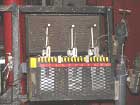 |  | 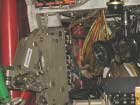 |
| A basket on the ROV that is used to collect samples. The ROV operator has to manipulate the arm, using only cameras to guide his movements, grab the handle, pull the sampler out, push it into the sediment, turn the handle to release springs to collect the sample, pick up the sampler and put it back in the basket. It is a tremendously complex operation with a remote control! |  | The mechanical arm with the camera and light allow scientists to see what is happening below. |
 |
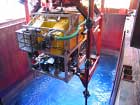 |  |  |
| ROV coming up from its first fully successful dive with cameras working and collections made. |  | Aaron Bradshaw, Russell Keltner, Kate Moran and Ray Salo watching the ROV arrive. |
 |
 |  | 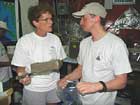 |
| Baban Ingole with the sediment samples. These, what they call blades, are pushed into the ocean floor and the two springs on each side are released, which collects the sample. The arm of the ROV is then manipulated to pull the blade out of the ocean floor and move it back into the basket on the ROV so that it can be brought to the surface. These sediments were collected from about 3 miles under the Indian Ocean. |  | The samples from the blades are then sliced in measured "bricks," which are then placed in collection containers. Joelle Galeron and Jon Copley discuss placing the sample in the bag because they ran out of plastic containers. They will then take the samples and use a sieve to sort the organisms that are living in the sediment. I haven't seen this, but was asked if I would help, so I will describe more when I see how it is done. |
|
|





